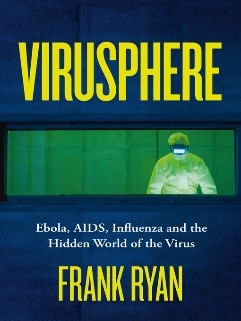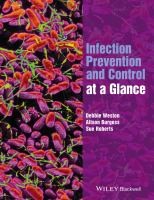An Overview of Viruses
This resource guide was created as part of a learning package on Pandemics. For other related resource guides, please head to this directory of Learning Packages.
Viruses : An Overview

Photo credit: Retrieved from pixabay.com/photos/covid-19-coronavirusy-epidemic-4916028/
Viruses are microscopic organisms that require a living host such as people, plants or animals to survive and reproduce. They have the ability to mutate as they multiply and these mutations may result in complications and challenging treatments for infected persons.
Viruses are invasive and parasitic and when one invades your body, it can launch attacks on various parts of your body, such as the liver, respiratory system or blood. However, you may not always fall sick, as your immune system may be strong enough to fight off the infection. Viral respiratory infections commonly affect the upper or lower respiratory tract (nose, sinuses, mouth, throat, voice box, windpipe and lungs) and tend to be more severe in older patients and infants. Examples of illnesses caused by respiratory viruses range from the common cold and bronchitis to more severe diseases such as H1N1, SARS and, most recently, Covid-19.
Antibiotics that are prescribed for bacterial infections do not work against viruses. For most viral infections, treatments can only ease symptoms, although there are antiviral medicines that may be effective. Vaccines can also help prevent many viral diseases.
Find out more about viruses and how viral infections can be controlled and treated through the resources listed below.
Videos and Podcasts
1. Flu virus 101
Source: Flu Virus 101 (2018, August 16). National Geographic. Retrieved March 26, 2020.
2. Where did viruses come from?
Source: Where did viruses come from? (2018, June 12). PBS. Retrieved March 25, 2020.
3. When viruses become pandemics
Miller, G. (2020, March). When viruses become pandemics. Le Monde. Retrieved March 25, 2020.
4. Introduction to coronaviruses
Source: Introduction to Coronaviruses (SARS, MERS, COVID-19: Host, Symptoms, History of SARS and MERS). JJ Medicine. Retrieved March 25, 2020.
Websites
1. What defines a ‘Pandemic,’ and how are they stopped?
What defines a ‘Pandemic,’ and how are they stopped? (2020). Discover. Retrieved March 26, 2020.
2. Pandemics from Homer to Stephen King: What we can learn from literary history
Pandemics from Homer to Stephen King: what we can learn from literary history. (2020). The Conversation. Retrieved March 26, 2020.
3. Infectious diseases / bacteria / viruses
Infectious Diseases / Bacteria / Viruses. (2020). Medical News Today. Retrieved March 25, 2020.

Photo credit: Retrieved from pixabay.com/illustrations/covid-covid-2019-covid-19-4941846/
If you are interested to read more about viruses, check out the following books and journal articles:
Books
1. The Germ Files: Health-conscious, Nutritious, Life-changing Facts about the Microbes that Share Our Bodies and Our World (eBook)
Tetro, J. (2016). The germ files: Health-conscious, nutritious, life-changing facts about the microbes that share our bodies and our world. Toronto, Canada: Doubleday Canada.

2. Viruses: A Very Short Introduction (eBook)
Crawford, D. H. (2020). Viruses: A very short introduction. Oxford, UK: OUP Oxford.

3. Virusphere: Ebola, AIDS, influenza and the hidden world of the virus (eBook)
Ryan, F. (2019). Virusphere: Ebola, AIDS, influenza and the hidden world of the virus. New York: HarperCollins Publisher.

4. Viruses as Complex Adaptive Systems (Book)
Solé, R. and Elena, S. F. (2019). Viruses as complex adaptive systems. Princeton, New Jersey: Princeton University Press.

5. Infection Prevention and Control at a Glance (Book)
Weston, D., Burgess, A. and Roberts, S. (2017). Infection prevention and control at a glance. Chichester, West Sussex; Hoboken, NJ: John Wiley and Sons, Ltd.

Journal Articles
1. Transmission routes of respiratory viruses among humans
Kutter, J. S. [et. al.]. (2018, February). Transmission routes of respiratory viruses among humans. Current Opinion in Virology, 28, 142-151. Retrieved March 25, 2020.
2. Emerging respiratory viruses in children
Schuster, J. E. (2018, March). Emerging respiratory viruses in children. Infectious Disease Clinics, 31 (1), 65-74. Retrieved March 25, 2020.
3. Factors affecting the tissue damaging consequences of viral infections
Sumbria D., Berber E. and Rouse B.T. (2019, October 4). Factors Affecting the Tissue Damaging Consequences of Viral Infections. Front. Microbiol, 10:2314. Retrieved March 26, 2020.
4. Viral evolution and Immune responses
Domingo-Calap, P. (2019) Viral evolution and Immune responses. Journal of Clinical Microbiology and Biochemical Technology, 5(2): 013-018. Retrieved March 26, 2020.
5. Rates of asymptomatic respiratory virus infection across age groups
Galanti, M. [et. al.]. (2019). Rates of asymptomatic respiratory virus infection across age groups. Epidemiology and Infection, 147, 1-6. Retrieved March 25, 2020. To access this article, please go to NLB’s eResources website - ProQuest Central database. You will require myLibraryID to access this article.
Disclaimer/ Rights statement
The information in this resource guide is valid as of March 2020 and correct as far as we are able to ascertain from our sources. It is not intended to be an exhaustive or complete history on the subject. Please contact the Library for further reading materials on the topic.
All Rights Reserved. National Library Board Singapore 2020.

